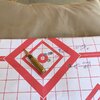WrongHanded
Member
- Joined
- Jul 6, 2017
- Messages
- 4,771
I got a new rifle and had some perplexing issues. I started a thread about it. here is (hopefully) the relevant post to this thread: https://www.thehighroad.org/index.php?threads/accuracy-irons-vs-ier-scope.873360/#post-11606107
Basically, I tested three types of 150gr .308/7.62 ammo. Two were using boat tail bullets and performed poorly. One was with the Remington Core-Lokt PSP, and performed as expected.
I believe this particular Core-Lokt bullet (and probably others) are a flat bottom design. That, to my mind, means these bullets probably have a larger bearing surface than a boat tail of the same weight. And I'm wondering if maybe this is where the accuracy issue with the other two types of ammo is coming from. Maybe that combined with a shorter barrel of 18.5" isn't stabilizing the bullet well?
I realize that some barrels are picky, and that I may even see increased accuracy with a heavier bullet. But I'm trying to wrap my head around this issue first, mainly because I don't want to buy what won't work decently.
If you have thoughts on it, please share.
Basically, I tested three types of 150gr .308/7.62 ammo. Two were using boat tail bullets and performed poorly. One was with the Remington Core-Lokt PSP, and performed as expected.
I believe this particular Core-Lokt bullet (and probably others) are a flat bottom design. That, to my mind, means these bullets probably have a larger bearing surface than a boat tail of the same weight. And I'm wondering if maybe this is where the accuracy issue with the other two types of ammo is coming from. Maybe that combined with a shorter barrel of 18.5" isn't stabilizing the bullet well?
I realize that some barrels are picky, and that I may even see increased accuracy with a heavier bullet. But I'm trying to wrap my head around this issue first, mainly because I don't want to buy what won't work decently.
If you have thoughts on it, please share.



